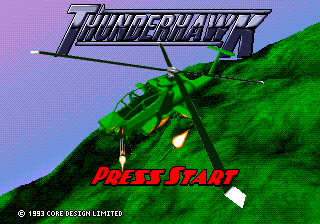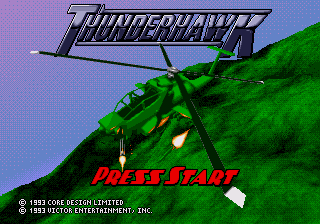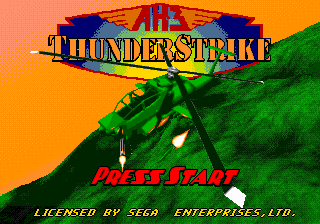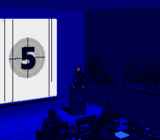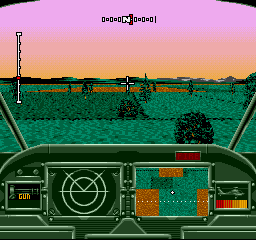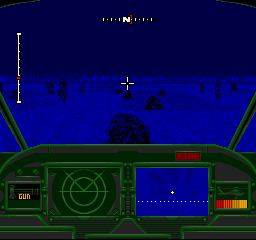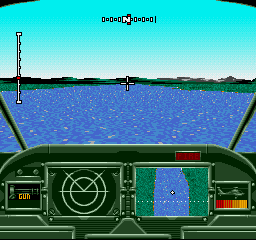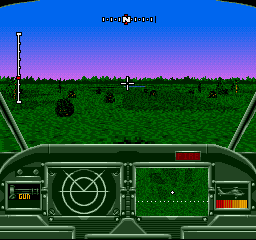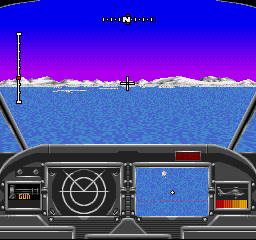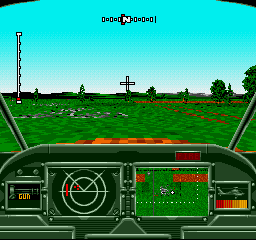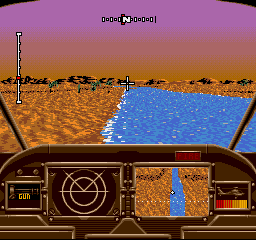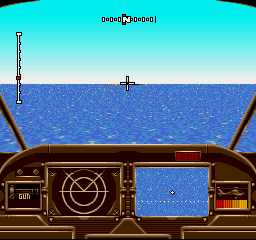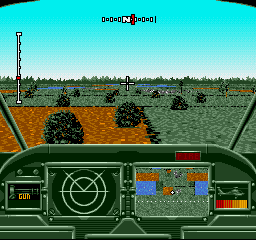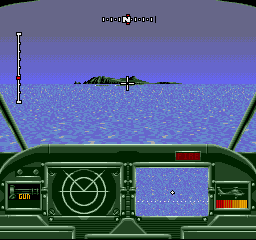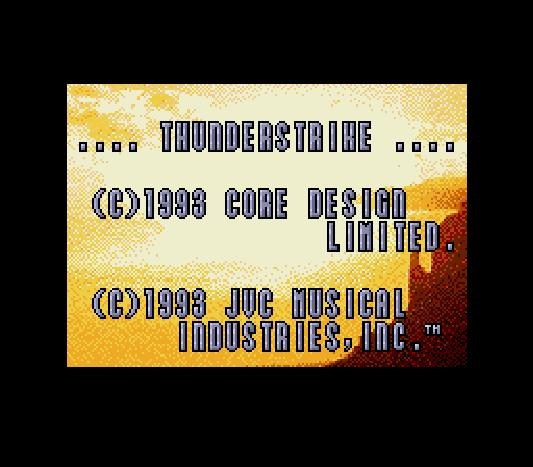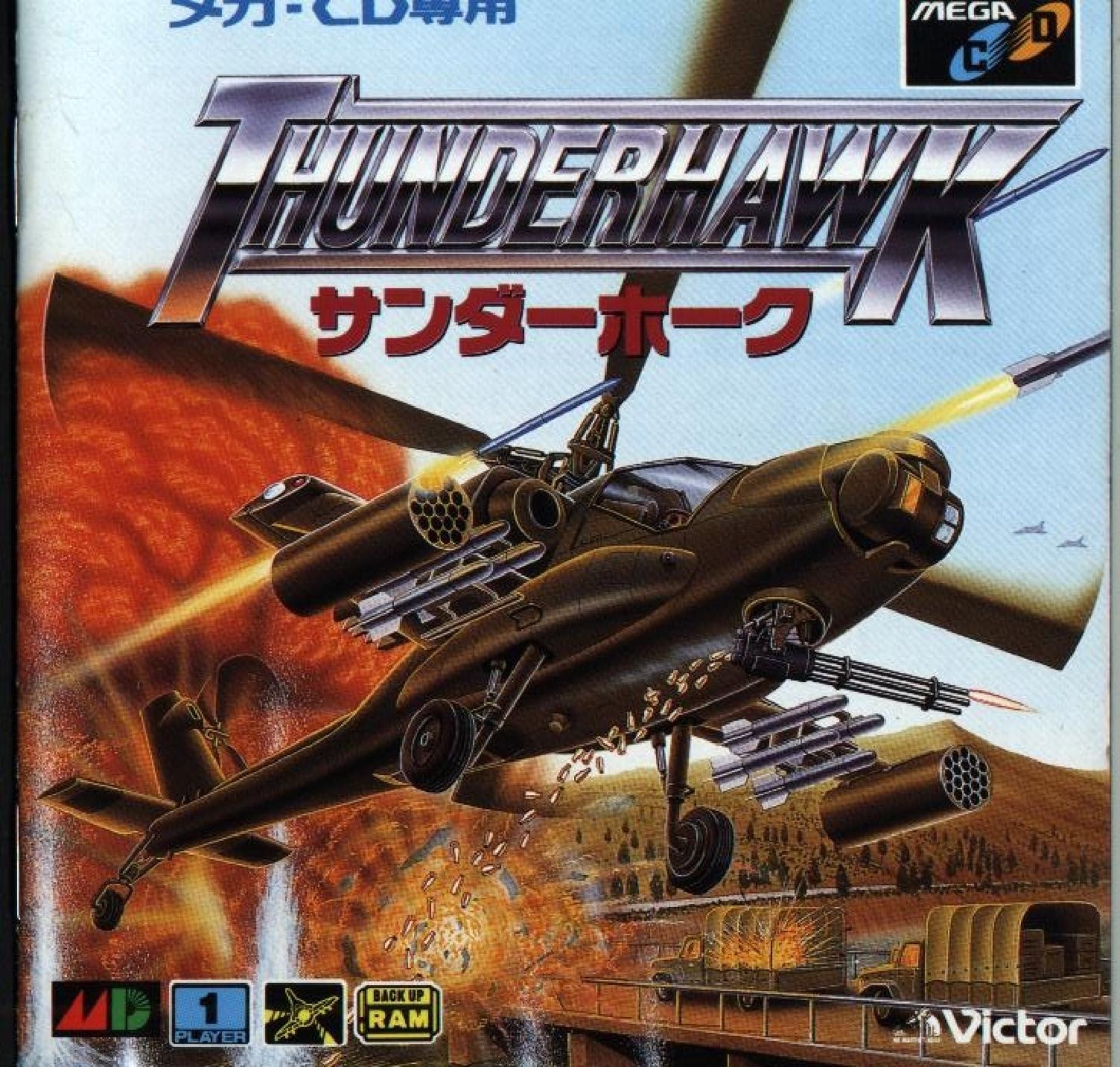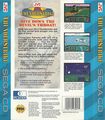Thunderhawk
From Sega Retro
| ||||||||||||||||||||||||||||||||||||||||||||||||||
| Thunderhawk | ||||||||||||||||||||||||||||||||||||||||||||||||||
|---|---|---|---|---|---|---|---|---|---|---|---|---|---|---|---|---|---|---|---|---|---|---|---|---|---|---|---|---|---|---|---|---|---|---|---|---|---|---|---|---|---|---|---|---|---|---|---|---|---|---|
| System(s): Sega Mega-CD | ||||||||||||||||||||||||||||||||||||||||||||||||||
| Publisher: JVC Musical Industries (US), Core Design (Europe), Victor Entertainment (Japan) | ||||||||||||||||||||||||||||||||||||||||||||||||||
| Developer: Core Design | ||||||||||||||||||||||||||||||||||||||||||||||||||
| Distributor: Ecofilmes (PT), Tec Toy (BR) | ||||||||||||||||||||||||||||||||||||||||||||||||||
| Peripherals supported: CD BackUp RAM Cart | ||||||||||||||||||||||||||||||||||||||||||||||||||
| Genre: Shooting[1][2] | ||||||||||||||||||||||||||||||||||||||||||||||||||
| Number of players: 1 | ||||||||||||||||||||||||||||||||||||||||||||||||||
| Official in-game languages: | ||||||||||||||||||||||||||||||||||||||||||||||||||
| ||||||||||||||||||||||||||||||||||||||||||||||||||
|
Thunderhawk (サンダーホーク), known as AH-3 Thunderstrike in North America, is a helicopter combat simulator game developed for the Sega Mega-CD by Core Design in 1993. During development, the North American version was known as AH-3 Firehawk.
Contents
Gameplay
In the game, the player controls a fictional AH-73M Thunderhawk (AH-3 Thunderstrike in the American version) attack helicopter in ten operations set across the world. Some operations are inspired by real events or activities in these areas (for example, escorting a UN humanitarian convoy during the Bosnian War or fighting pirates in the South China Sea). Each operation consists of four or five missions. While each mission has a primary objective that must be completed to successfully complete the mission, usually destroying a major structure like an enemy base or a bridge. A voice-acted briefing before the mission outlines the objective and discusses the threats in the area. There are other targets in the missions such as tanks and SAM launchers that can be destroyed to boost the player's score. It is often advantageous to destroy smaller targets such as communications stations and airports to soften the resistance before proceeding to the primary target.
The helicopter flies forward with ![]() and backward with
and backward with ![]() . It banks with
. It banks with ![]() and
and ![]() . It rotates with HOLD
. It rotates with HOLD ![]()
![]() or
or ![]() . The player can change the altitude of the helicopter with HOLD
. The player can change the altitude of the helicopter with HOLD ![]()
![]() or
or ![]() . Flying lower helps avoid enemy radar, but flying higher avoids obstacles such as trees.
. Flying lower helps avoid enemy radar, but flying higher avoids obstacles such as trees.
The helicopter is equipped with a standard set of weapons: missiles, rockets, and a machine gun. Missiles and rockets have finite ammunition, restocked at the beginning of each mission, but the machine gun has unlimited ammunition. On some special missions, the rockets are replaced by a weapon that is critical to the success of that particular mission, such as a Runway Cratering System (RCS) when the primary objective is to destroy an airbase or a bomb when destruction of a bridge or submarine is the primary objective. Weapons are fired with ![]() . The player can switch between the available weapons with
. The player can switch between the available weapons with ![]() . Missiles automatically lock-on to targets as they appear on screen and seek them when fired. If there are multiple enemies on screen, the selected target can be cycled with
. Missiles automatically lock-on to targets as they appear on screen and seek them when fired. If there are multiple enemies on screen, the selected target can be cycled with ![]() . Primary targets are noted when they are approached and highlighted. Some missions have friendly targets that must not be destroyed.
. Primary targets are noted when they are approached and highlighted. Some missions have friendly targets that must not be destroyed.
The helicopter cockpit shows multiple instruments: the armor level, which shows how much damage it has sustained; a map, which shows the surrounding terrain, with ground objectives highlighted; the radar, which shows the locations of nearby threats (ground threats as red dots, air threats as yellow dots, missiles are white dots, and friendlies are blue dots); the radar detection warning light, which flashes red when an enemy has locked-on to the helicopter; the mission complete indicator, which flashes yellow when all of the objectives have been successfully completed; and the currently selected weapon. The map is also used for targeting when using bombs or the RCS. An altimeter, showing the current altitude, and a heading indicator, showing the direction of travel, are overlaid on the world view.
Once the mission objectives have been completed, the player must fly out of the mission zone. The perimeter of the mission zone is indicated by white lines on the map. The player can choose to fly out of the mission zone before the objectives have been completed (which may be necessary if the player has low armor or has run out of ammunition). The player receives a demerit for each objective failed; receiving three demerits on a single operation ends the game. Bonus points are given for the percentage of enemy threats destroyed. After completing an operation, the player receives an operation ribbon and can save the game to the Mega-CD's internal memory.
The player faces land (tanks, missile launchers), air (other helicopters, jet fighters), and sea (gunboats) threats. Colliding with obstacles such as trees and buildings also damages the helicopter. Expending the armor gauge crashes the helicopter and ends the game.
There are three difficulty levels (Easy, Medium, and Hard).
Operations
Operations can be selected to play in any order. Each operation consists of four or five missions.
| South America, Arms Running | |
|---|---|
| South America, Stealth Down | |
| Panama Canal, Canal Crisis | |
| Central America, Recapture Town | |
| Alaska, Bio-Research | |
| Eastern Europe, Combined Nations Convoy | |
| Middle East, Occupied Base Liberation | |
| Middle East, Oil Dispute | |
| South East Asia, Chemical Warfare | |
| South China Seas, Piracy | |
History
Release
In the United Kingdom at least, Thunderhawk is thought to have been the best selling Mega-CD title released in the region[12], with an estimated 80% of Mega-CD owners also owning a copy of the game[12].
Legacy
Thunderhawk was followed by a sequel on the Sega Saturn, Thunderhawk II.
Production credits
- (C)1993 Core Design Limited.
- (C)1993 JVC Musical Industries, Inc.™
- Executive Producer: Harunobu Komori
- Producer: Toshiyuki Nagai
- Director: Gaku Sato
- Special Thanks: Takeshi Minagawa, Kaoru Tomiyama
- Executive Producer: Jeremy Heath Smith
- Programming: Mark Avory
- Graphics: Jason Gee
- Music: Martin Iveson
- Live Guitar: Anthony Wheeldon
- Producer: Jeremy H. Smith
- Programmer: Mark Avory
- Artist: Jason Gee
- Musician: Martin Iveson
- Playtesting: Adrian Smith, Mark Price, Darren Price
- Exective Producer: Harunobu Komori
- Producer: Toshiyuki Nagai
- Director: Gaku Sato
- Assistant: Ryo Misawa, Kohji Ishizeki, Takayuki Andoh
- Manual: Rie Toshima, Comix Brand
- Translate: Kayko Watanabe
- Illustration: Kouichi Miyazima, CG IllustrationRio Huzuki
- Actor Coordinator: Susumu Aketagawa
- Actor: Yusaku Yara
- Thanks: Takeshi Minagawa, Takeyuki Kasakura, Shunji Nishizawa, And All V.E. Staff
- Special Thanks for: Kaoru Tomiyama
Magazine articles
- Main article: Thunderhawk/Magazine articles.
Promotional material
- Main article: Thunderhawk/Promotional material.
Artwork
Physical scans
| ExpandSega Retro Average |
|---|
| 86 | |
|---|---|
| Based on 45 reviews | |
Technical information
- Main article: Thunderhawk/Technical information.
References
- ↑ File:Thunderhawk MCD JP Box Front.jpg
- ↑ Jump up to: 2.0 2.1 https://sega.jp/fb/segahard/mcd/soft_licensee.html (Wayback Machine: 2019-06-10 17:56)
- ↑ https://groups.google.com/g/rec.games.video.sega/c/eI0U1knpeeA/m/-lZGD60zJxsJ
- ↑ Jump up to: 4.0 4.1 Game Players, "Vol. 7 No. 1 January 1994" (US; 199x-xx-xx), page 54
- ↑ Sega Mega Drive Advanced Gaming, "January 1994" (UK; 1993-1x-xx), page 10
- ↑ Sega Force Mega, "January 1994" (UK; 1993-12-16), page 112
- ↑ Mega, "October 1993" (UK; 1993-09-16), page 27
- ↑ Select Round, "Octobre 1993" (FR; 1993-xx-xx), page 2
- ↑ Megablast, "4/93" (DE; 1993-09-29), page 35
- ↑ Sega Magazin, "September/Oktober 1993" (DE; 1993-09-01), page 31
- ↑ Megazone, "January 1994" (AU; 1993-12-29), page 35
- ↑ Jump up to: 12.0 12.1 Mean Machines Sega, "January 1996" (UK; 1995-11-xx), page 19
- ↑ File:AH-3 Thunderstrike MCD credits.pdf
- ↑ File:Thunderhawk mcd jp manual.pdf, page 13
- ↑ Aktueller Software Markt, "März 1994" (DE; 1994-02-07), page 105
- ↑ Beep! MegaDrive, "October 1993" (JP; 1993-09-08), page 25
- ↑ Consoles +, "Novembre 1993" (FR; 1993-1x-xx), page 148
- ↑ Computer & Video Games, "October 1993" (UK; 1993-09-15), page 74
- ↑ Edge, "November 1993" (UK; 1993-09-30), page 82
- ↑ Electronic Gaming Monthly, "November 1993" (US; 1993-xx-xx), page 50
- ↑ Famitsu, "1993-09-24" (JP; 1993-09-10), page 39
- ↑ Freak, "11/93" (IL; 1993-xx-xx), page 1
- ↑ GamePro, "October 1993" (US; 1993-xx-xx), page 84
- ↑ Gamers, "Oktober/November 1993" (DE; 1993-09-24), page 74
- ↑ GamesMaster (UK) "Series 3, episode 2" (1993-09-16, 24:00) (+7:55)
- ↑ Game Informer, "November/December 1993" (US; 1993-1x-xx), page 48
- ↑ Hippon Super, "October 1993" (JP; 1993-09-03), page 41
- ↑ Hobby Consolas, "Septiembre 1993" (ES; 1993-xx-xx), page 116
- ↑ Hyper, "December 1993" (AU; 1993-xx-xx), page 56
- ↑ Joypad, "Octobre 1993" (FR; 1993-xx-xx), page 122
- ↑ Joypad, "1/1995" (HU; 1995-xx-xx), page 15
- ↑ MAN!AC, "11/93" (DE; 1993-xx-xx), page 35
- ↑ Sega Mega Drive Advanced Gaming, "November 1993" (UK; 1993-09-30), page 46
- ↑ Mega, "October 1993" (UK; 1993-09-16), page 24
- ↑ Mega Action, "November 1993" (UK; 1993-10-07), page 38
- ↑ Megablast, "1/94" (DE; 1993-12-29), page 30
- ↑ Mega Force, "Mega-CD Force: Le Supplément Spécial Mega-CD" (FR; 1993-xx-xx), page 18
- ↑ Mega Fun, "10/93" (DE; 1993-09-22), page 36
- ↑ MegaTech, "October 1993" (UK; 1993-09-20), page 54
- ↑ Mean Machines Sega, "November 1993" (UK; 1993-09-28), page 42
- ↑ Player One, "Septembre 1993" (FR; 1993-08-xx), page 56
- ↑ Power Up!, "Saturday, January 01, 1994" (UK; 1994-01-01), page 1
- ↑ Power Unlimited, "Jaargang 2, Nummer 2, Februari 1994" (NL; 1994-01-26), page 60
- ↑ Sega Magazin, "September/Oktober 1993" (DE; 1993-09-01), page 30
- ↑ Sega News, "Leden 1997" (CZ; 1997-xx-xx), page 32
- ↑ Sega Power, "October 1993" (UK; 1993-09-02), page 36
- ↑ Sega Pro, "October 1993" (UK; 1993-09-09), page 44
- ↑ Sega Zone, "October 1993" (UK; 1993-09-xx), page 38
- ↑ Sega Force Mega, "Autumn 1993" (UK; 1993-09-16), page 110
- ↑ Sega Force, "8/93" (SE; 1993-12-09), page 20
- ↑ Sonic Mag: B.D. & Jeux-Video!, "Avril 1994" (FR; 1994-xx-xx), page 34
- ↑ Sega Saturn Magazine, "September 1995" (JP; 1995-08-08), page 85
- ↑ Sonic the Comic, "November 27th 1993" (UK; 1993-11-27), page 10
- ↑ Todo Sega, "Octubre 1993" (ES; 1993-xx-xx), page 54
- ↑ VideoGames Shopper, "January 1994" (UK; 1993-xx-xx), page 39
- ↑ Video Games, "10/93" (DE; 1993-09-29), page 108
- ↑ VideoGames, "February 1994" (US; 1994-0x-xx), page 66
- ↑ VideoGames, "April 1994" (US; 1994-0x-xx), page 82
| CollapseThunderhawk | |
|---|---|
|
Main page | Magazine articles | Video coverage | Reception | Promotional material | Technical information | |
- CD BackUp RAM Cart-compatible games
- 1 player games
- JP Mega-CD games
- All JP games
- US Mega-CD games
- All US games
- EU Mega-CD games
- All EU games
- DE Mega-CD games
- All DE games
- FR Mega-CD games
- All FR games
- PT Mega-CD games
- All PT games
- UK Mega-CD games
- All UK games
- AU Mega-CD games
- All AU games
- BR Mega-CD games
- All BR games
- Mega-CD games
- 1993 Mega-CD games
- All 1993 games
- Mega-CD shoot-'em-up games
- All shoot-'em-up games
- All games
- Old-style rating (gamesmaster)
- Rating without PDF source
- Update ratings template
- 1 old ratings
- Thunderhawk
